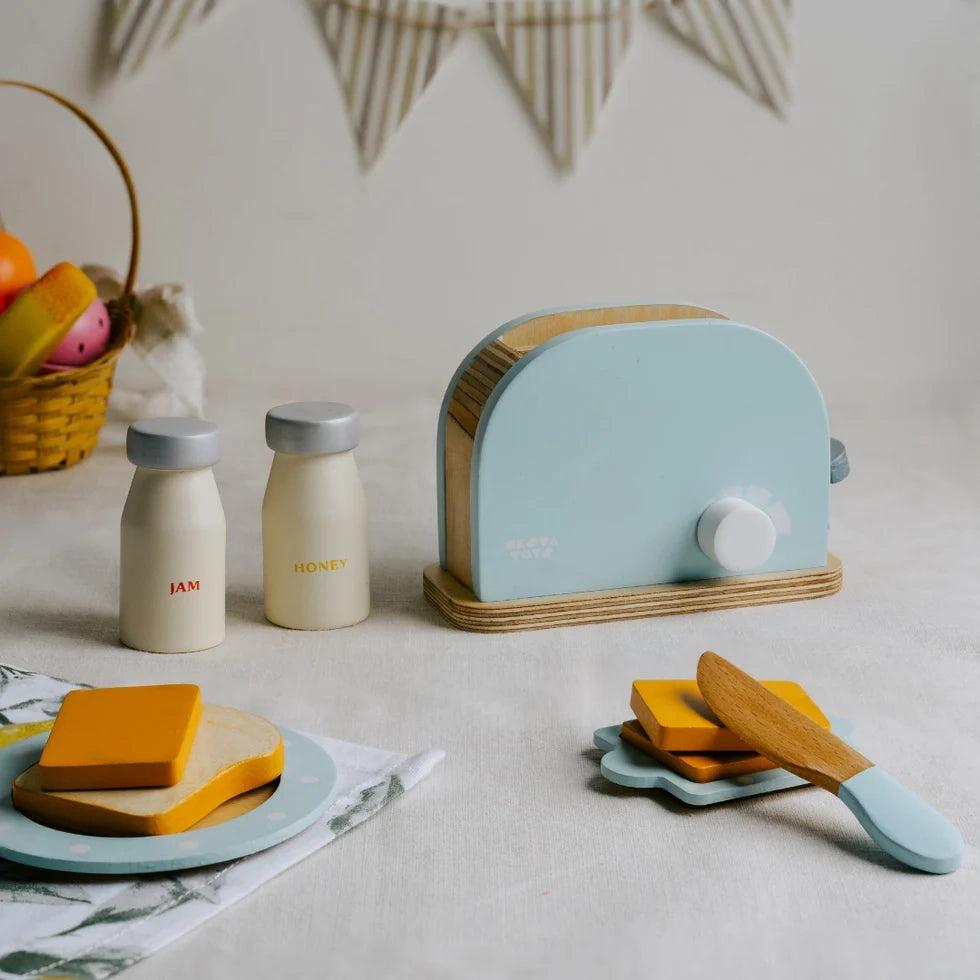Aim: Stamps and Beads Activity
This hands-on approach helps children grasp the decimal system and place value while boosting their confidence in reading, writing, and interpreting numbers using Montessori-inspired materials.
Description:
This activity utilizes a specially designed box containing four compartments filled with cardboard stamps to help children understand the concept of place value. The rightmost compartment holds green stamps, each representing a single unit, while the adjacent compartment contains blue stamps marked with the number 10, symbolizing ten units. Next to it are red stamps denoting 100, followed by another set of green stamps representing 1000. Along with the stamps, there are squared paper, three colored pencils (red, blue, and green), and a writing pad. For demonstration purposes, the Golden Bead Material (Static Part) is also provided, which helps in visualizing and manipulating the different place values in a tactile way.
Steps for Conducting the Activity:
Introduction to Materials:
- Guide the child to the display area where the materials are showcased.
- Introduce the purpose and use of each component—stamps, colored pencils, squared paper, and Golden Bead Material.
- Encourage the child to bring the materials to their workspace for hands-on exploration.
Connecting Beads and Stamps:
- Use the Golden Bead Material to establish a connection between beads and stamps.
- Explain how each bead category—1, 10, 100, and 1000—corresponds to the respective stamps.
- After the child understands this relationship, return the beads to storage and organize the stamps back in the box.
Number Formation Practice:
- Start with single-category numbers. For example: Provide only unit stamps and guide the child to create numbers like 5, 7, or 9.
- Gradually introduce multi-category numbers: Combine unit, tens, and hundreds stamps to form numbers such as 132 or 704.
- Emphasize proper placement, with units on the right and higher categories to the left.
- Encourage the child to say the numbers out loud to help reinforce their understanding.
Interpreting Numbers with Missing Categories:
- Guide the child to create numbers with missing categories (e.g., 5029, where there are no hundreds).
- Explain how to interpret these numbers by identifying the absent category
Independent Writing of Numbers:
- Encourage the child to write down the numbers they create using stamps, ensuring correct alignment of categories.
Two-Number Practice:
- Suggest creating two numbers, such as 7314 and 206, using stamps. Align the stamps in columns according to their respective categories (ones, tens, hundreds, thousands) to ensure proper placement.
- Start with the first number and write it down, then move to the second number.
- Guide the child to interpret the second number, "206," by identifying each category. For example, point out that the "2" is in the hundreds column, the "0" is in the tens column, and the "6" is in the units column.
- Repeat this process until the child becomes confident.
Introducing Numbers with Zeros:
- Use examples like 4030 to demonstrate how to manage numbers containing zeros.
- Explain how to read and write such numbers while emphasizing the absence of certain categories.

This structured approach ensures the child develops a solid understanding of place value through guided practice and independent exploration, building confidence in number reading, writing, and interpretation.
Conclusion:
This Montessori-inspired activity effectively bridges the gap between concrete and abstract concepts in place value. By using hands-on materials like stamps and the Golden Bead Material, children gain a deeper understanding of numbers and their composition, helping them visualize place value and enhance their mathematical thinking. The progression from tangible to written forms ensures a solid grasp of place value, enabling children to independently read, write, and interpret numbers confidently. This method not only strengthens mathematical skills but also fosters logical thinking, attention to detail, and a deeper understanding of numerical relationships.









